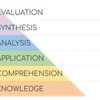Mainstream Inclusion Calderdale
Resource Finder
Find a mainstream inclusion resource
| File |
|---|
 |
| File |
|---|
 |
| File |
|---|
Adjustments for candidates with disabilities and learning difficulties
Pricing
Free
Removing barriers to
Evidenced
| File |
|---|
 |
| File |
|---|
 |
Boxall profile
Pricing
Purchase
Removing barriers to
Challenges in processing information
Evidenced
| File |
|---|
 |
| File |
|---|
| File |
|---|
| File |
|---|
| File |
|---|
Deaf Friendly Teaching: Secondary School staff
Pricing
Purchase
Removing barriers to
Evidenced
| File |
|---|
| File |
|---|
Example SEND information report
Pricing
Council provided (Free)
Removing barriers to
Evidenced
| File |
|---|
 |
| File |
|---|
| File |
|---|
| File |
|---|
| File |
|---|
| File |
|---|
| File |
|---|
 |
| File |
|---|
- 1
- 2